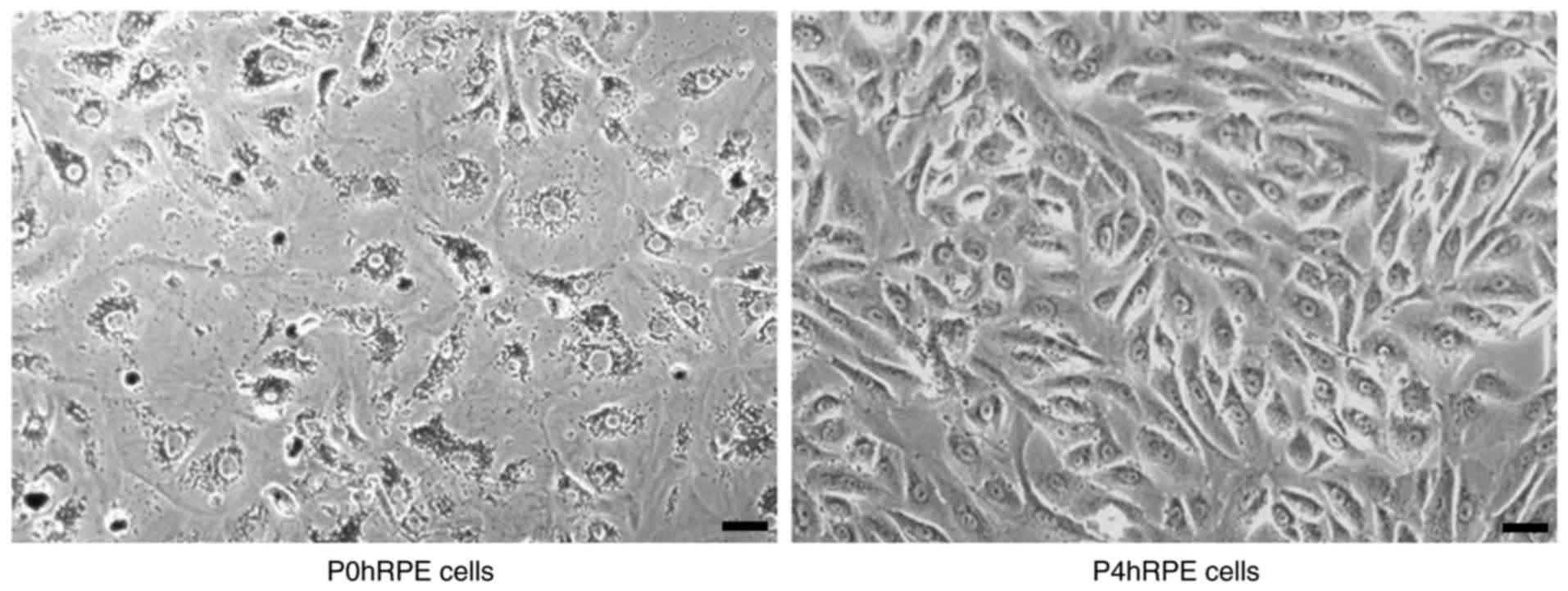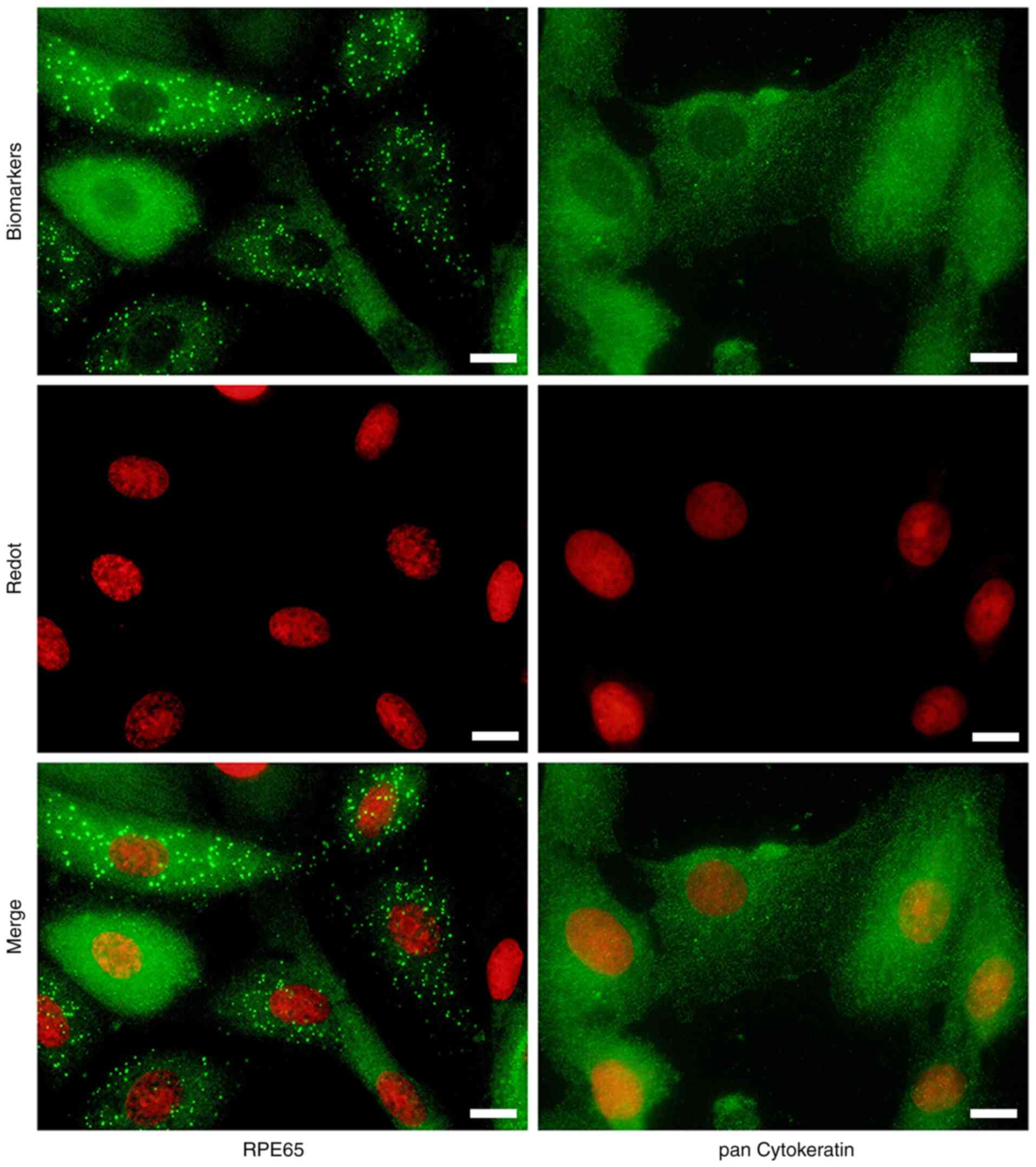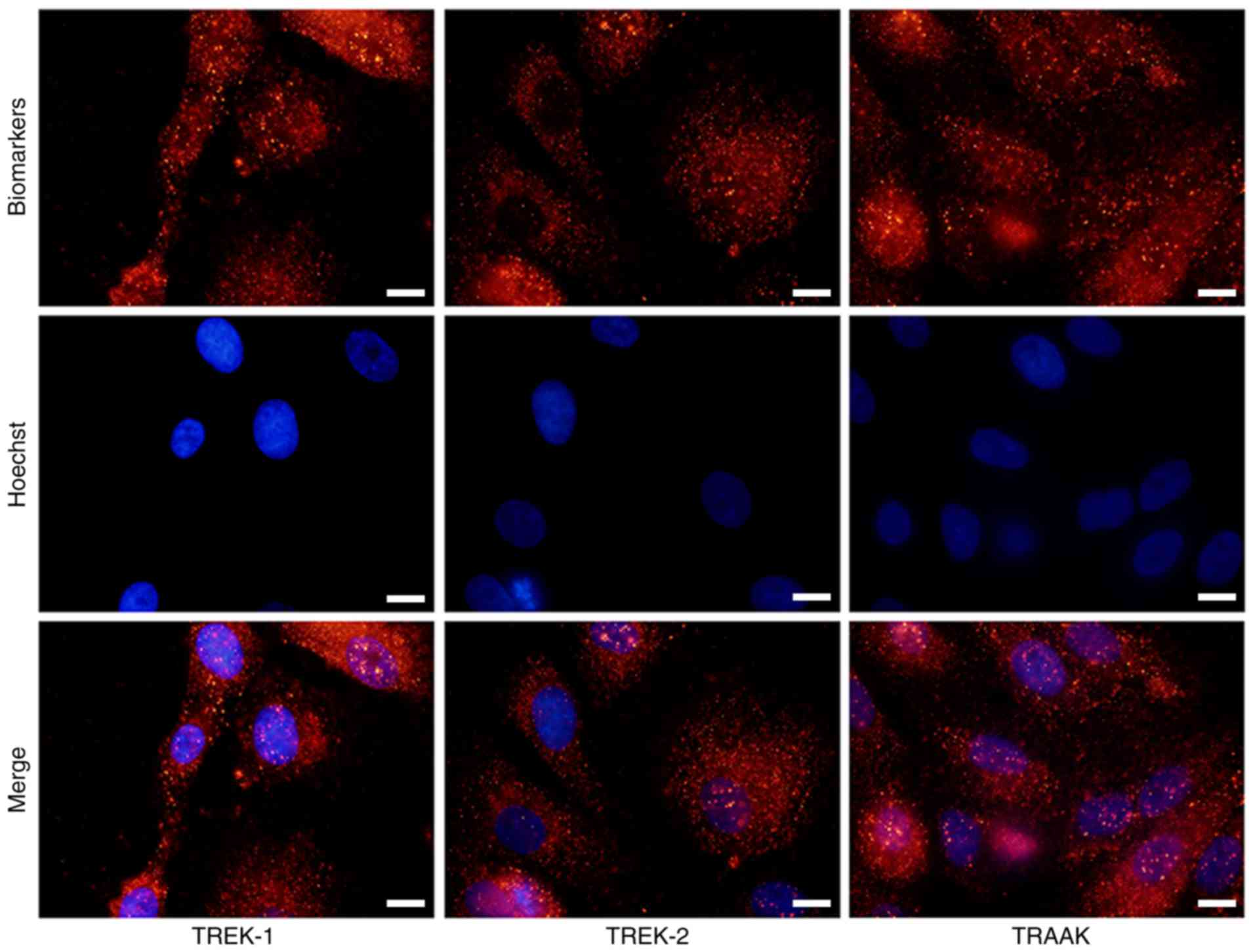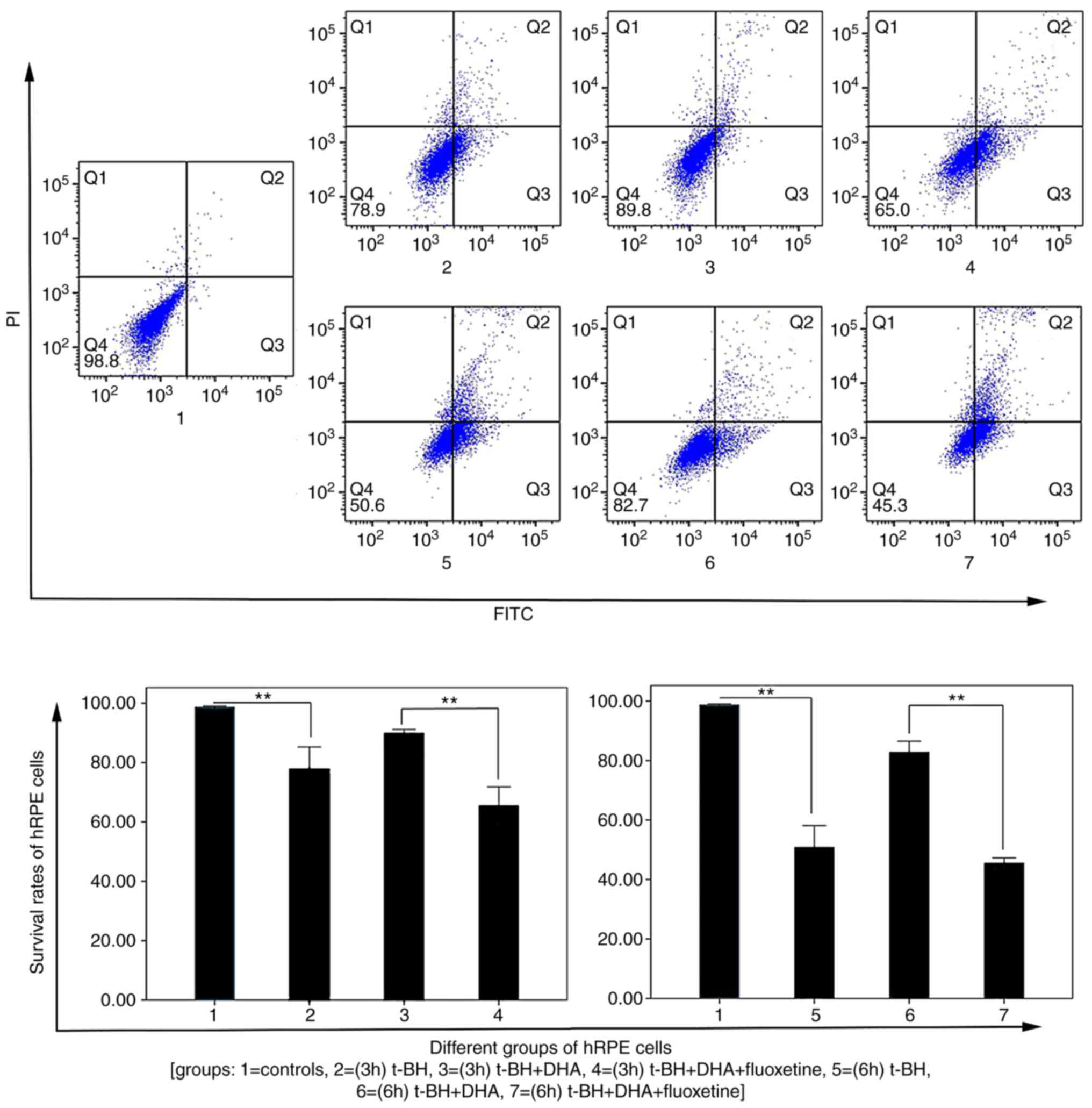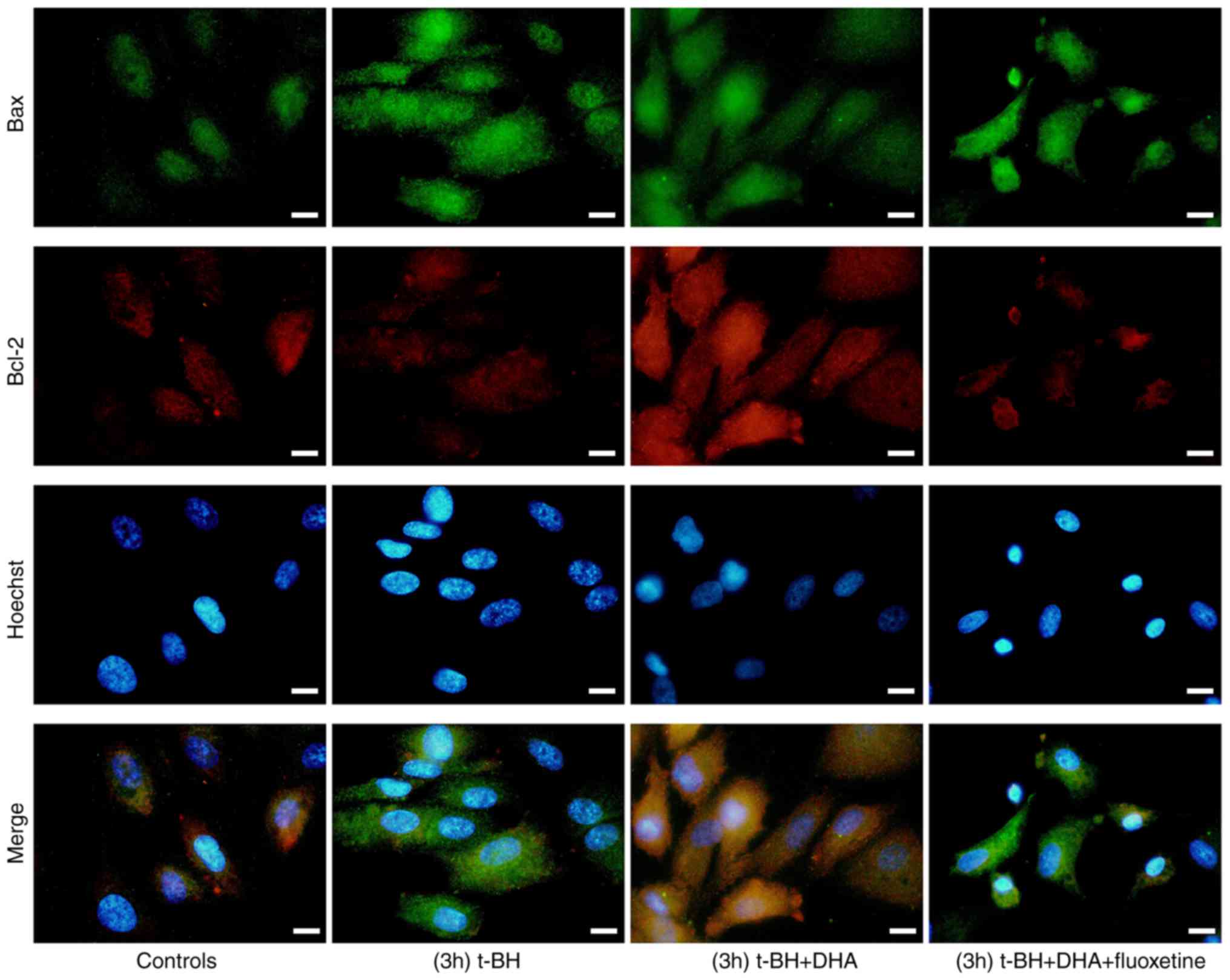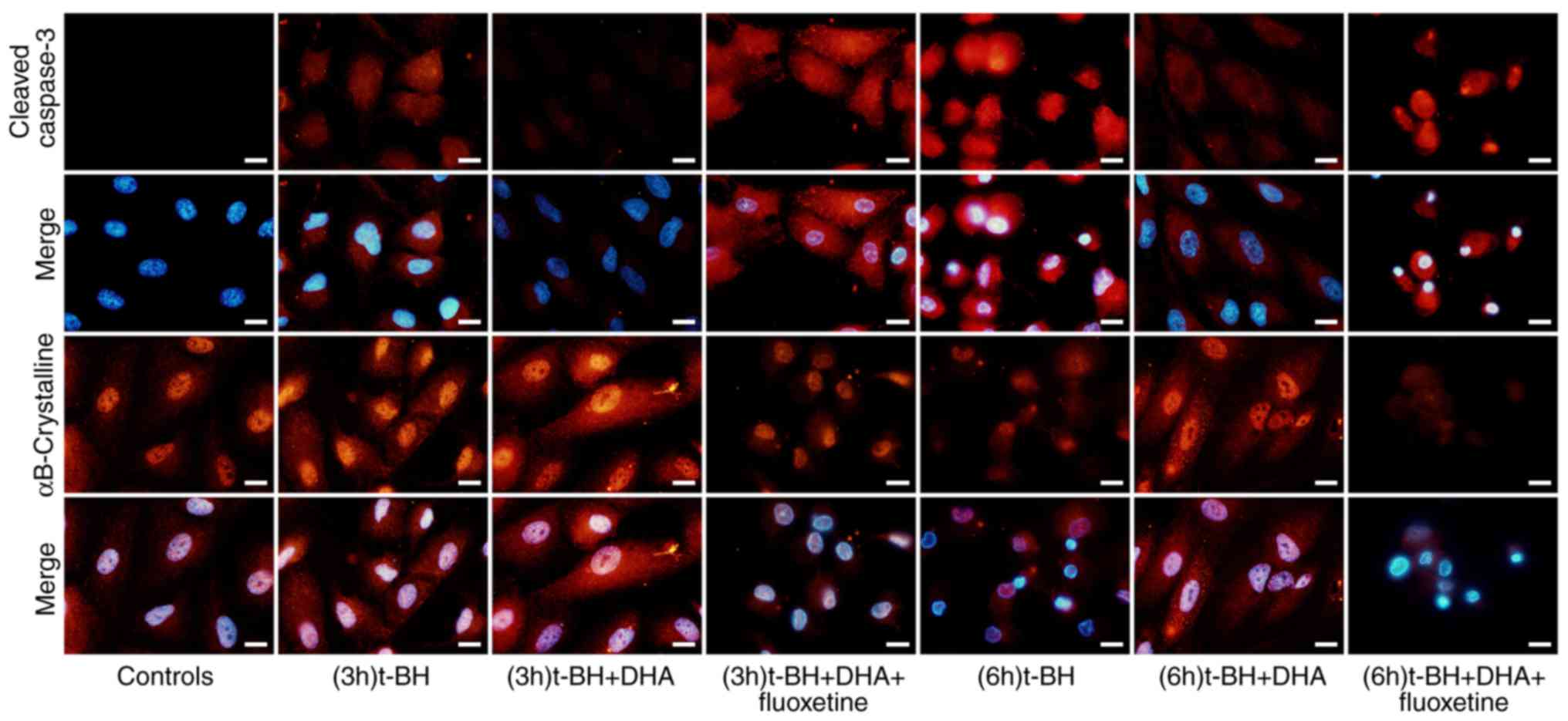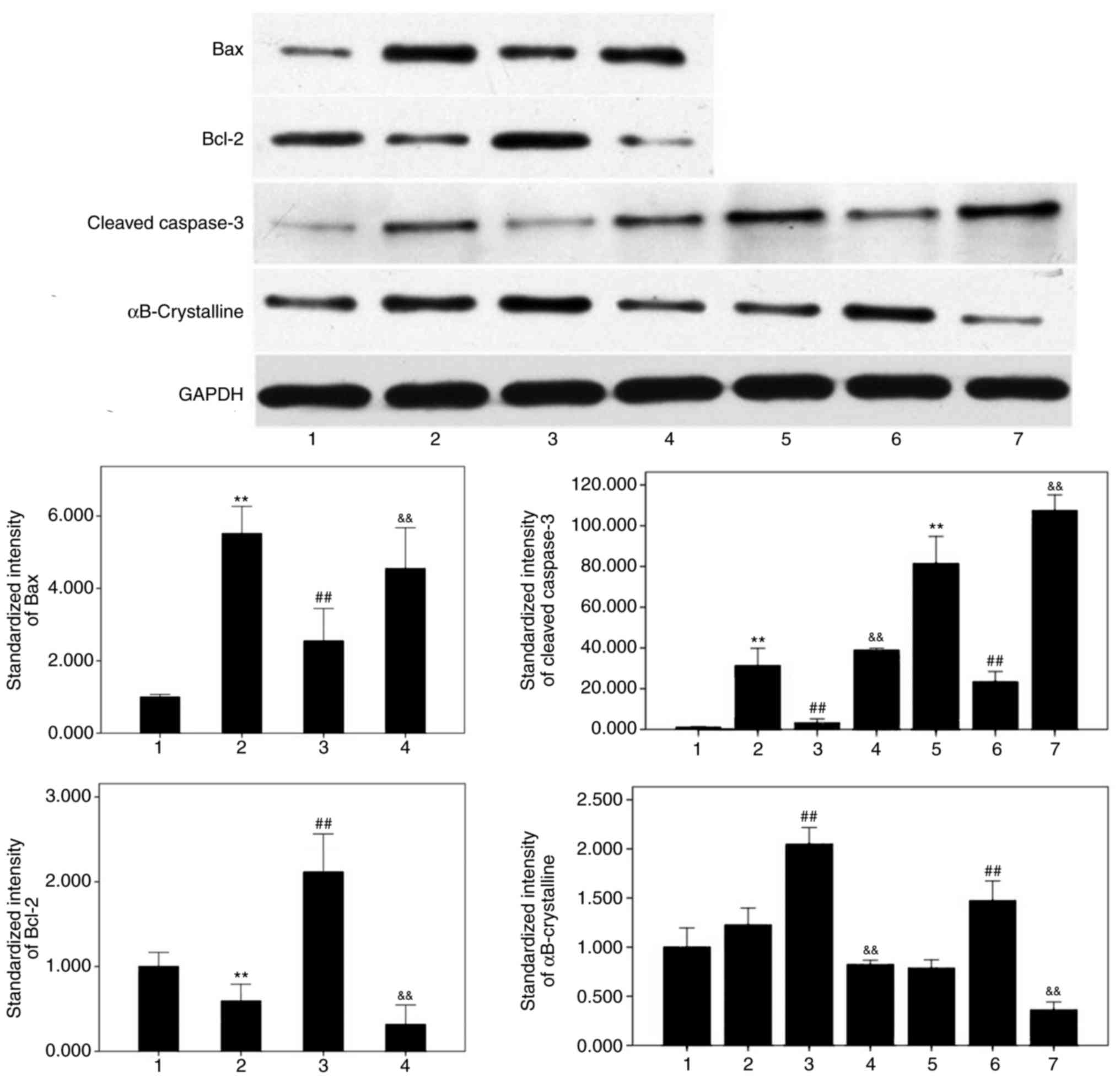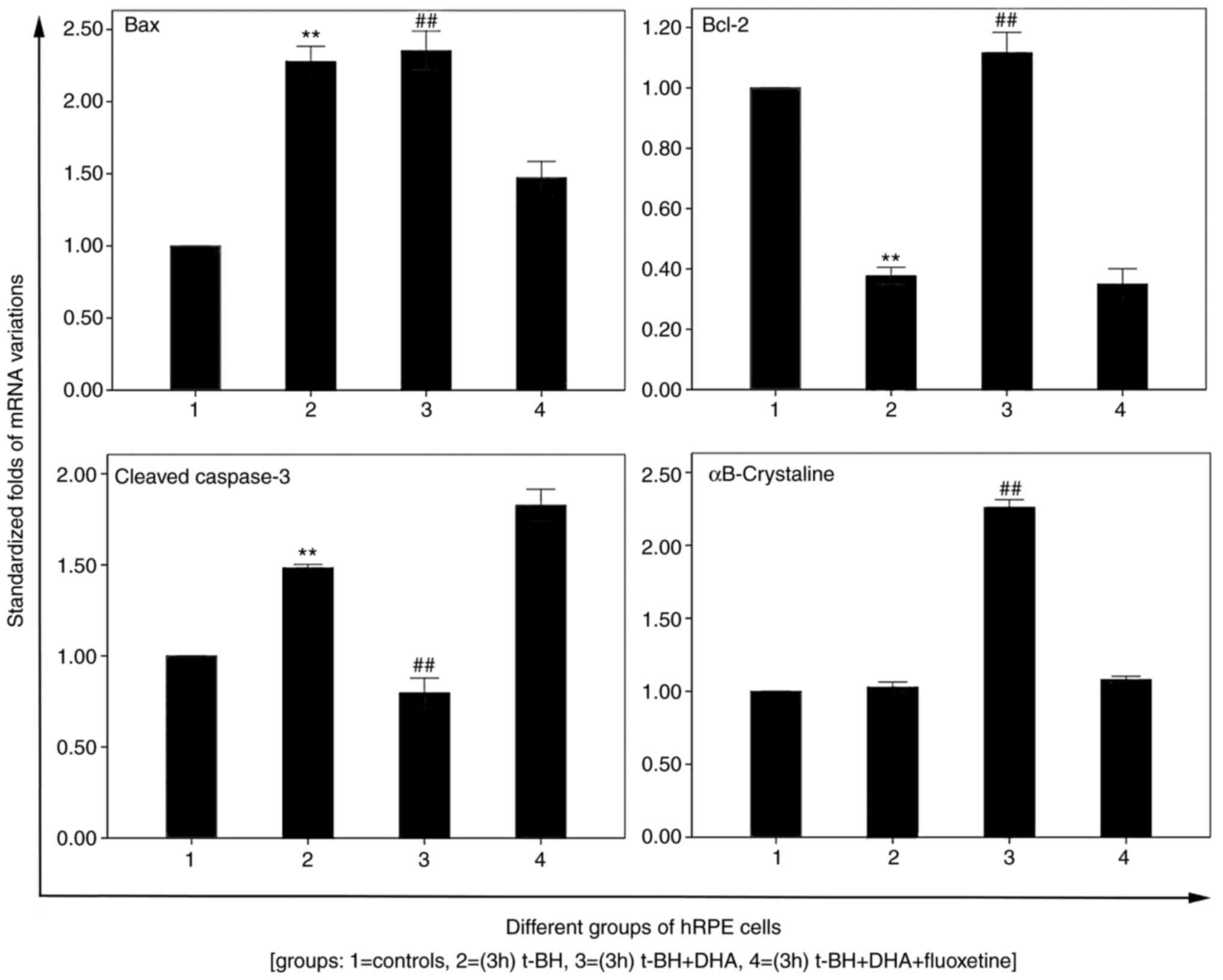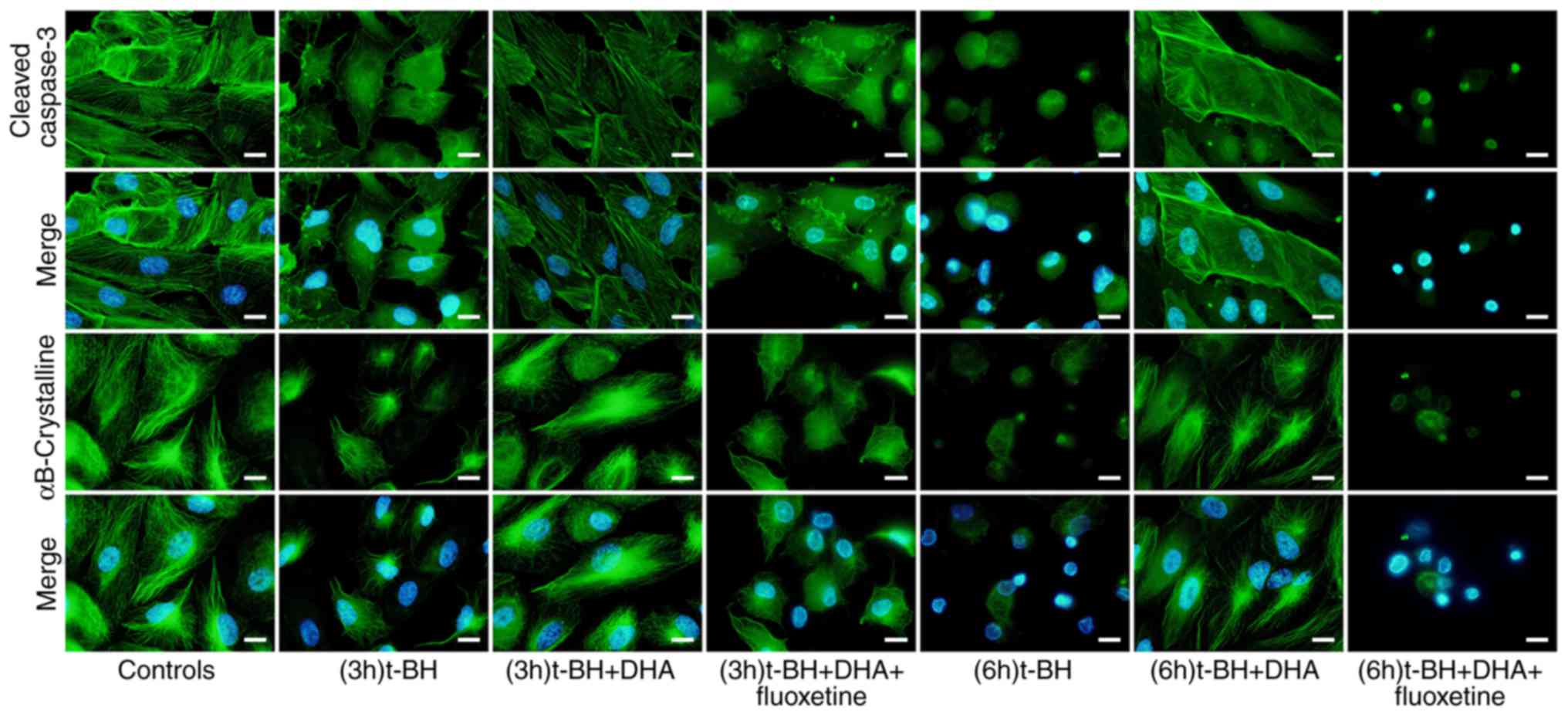|
1
|
Pascolini D and Mariotti SP: Global
estimates of visual impairment: 2010. Br J Ophthalmol. 96:614–618.
2012. View Article : Google Scholar
|
|
2
|
Athanasiou D, Aguilà M, Bevilacqua D,
Novoselov SS, Parfitt DA and Cheetham ME: The cell stress machinery
and retinal degeneration. FEBS Lett. 587:2008–2017. 2013.
View Article : Google Scholar : PubMed/NCBI
|
|
3
|
Zhu XB, Luo Y, Xie L, Gao Y, Ding XY, Ma
HJ, Chen HY and Tang SB: Inhibition of photoreceptor apoptosis in
RCS rats by caspase-9 inhibitor. Chin J Pathophysiol. 23:7–11.
2007.In Chinese.
|
|
4
|
Perche O, Doly M and Ranchon-Cole I:
Transient protective effect of caspase inhibitors in RCS rat. Exp
Eye Res. 86:519–527. 2008. View Article : Google Scholar : PubMed/NCBI
|
|
5
|
Talley EM, Solorzano G, Lei Q, Kim D and
Bayliss DA: Cns distribution of members of the two-pore-domain
(KCNK) potassium channel family. J Neurosci. 21:7491–7505. 2001.
View Article : Google Scholar : PubMed/NCBI
|
|
6
|
Honore E: The neuronal background K2P
channels: Focus on TREK1. Nat Rev Neurosci. 8:251–261. 2007.
View Article : Google Scholar : PubMed/NCBI
|
|
7
|
Noël J, Sandoz G and Lesage F: Molecular
regulations governing TREK and TRAAK channel functions. Channels
(Austin). 5:402–409. 2011. View Article : Google Scholar
|
|
8
|
Buckler KJ: Two-pore domain K+ channels
and their role in chemoreception. Adv Exp Med Biol. 661:15–30.
2010. View Article : Google Scholar
|
|
9
|
Laigle C, Confort-Gouny S, Le Fur Y,
Cozzone PJ and Viola A: Deletion of TRAAK potassium channel affects
brain metabolism and protects against ischemia. PLoS One.
7:e532662012. View Article : Google Scholar
|
|
10
|
Bayliss DA and Barrett PQ: Emerging roles
for two-pore-domain potassium channels and their potential
therapeutic impact. Trends Pharmacol Sci. 29:566–575. 2008.
View Article : Google Scholar : PubMed/NCBI
|
|
11
|
Heurteaux C, Laigle C, Blondeau N,
Jarretou G and Lazdunski M: Alpha-linolenic acid and riluzole
treatment confer cerebral protection and improve survival after
focal brain ischemia. Neuroscience. 137:241–251. 2006. View Article : Google Scholar
|
|
12
|
Judge SI and Smith PJ: Patents related to
therapeutic activation of K(ATP) and K(2P) potassium channels for
neuroprotection: Ischemic/hypoxic/anoxic injury and general
anesthetics. Expert Opin Ther Pat. 19:433–460. 2009. View Article : Google Scholar : PubMed/NCBI
|
|
13
|
Enyedi P and Czirjak G: Molecular
background of leak K+ currents: Two-pore domain
potassium channels. Physiol Rev. 90:559–605. 2010. View Article : Google Scholar : PubMed/NCBI
|
|
14
|
Querques G, Forte R and Souied EH: Retina
and omega-3. J Nutr Metab. 2011:7483612011. View Article : Google Scholar : PubMed/NCBI
|
|
15
|
Kennard LE, Chumbley JR, Ranatunga KM,
Armstrong SJ, Veale EL and Mathie A: Inhibition of the human
two-pore domain potassium channel, TREK-1, by fluoxetine and its
metabolite norfluoxetine. Br J Pharmacol. 144:821–829. 2005.
View Article : Google Scholar : PubMed/NCBI
|
|
16
|
Dong YY, Pike AC, Mackenzie A, McClenaghan
C, Aryal P, Dong L, Quigley A, Grieben M, Goubin S, Mukhopadhyay S,
et al: K2P channel gating mechanisms revealed by structures of
TREK-2 and a complex with Prozac. Science. 347:1256–1259. 2015.
View Article : Google Scholar : PubMed/NCBI
|
|
17
|
Lee AK, Smart JL, Rubinstein M, Low MJ and
Tse A: Reciprocal regulation of TREK-1 channels by arachidonic acid
and CRH in mouse corticotropes. Endocrinology. 152:1901–1910. 2011.
View Article : Google Scholar : PubMed/NCBI
|
|
18
|
Shen C, Li C, Zhu X, Zheng W and Xia R:
Effect of TRAAK activator riluzole on t-BHP induced injury of human
retinal pigment epithelial cells. Chin J Ocul Fund Dis. 29:400–405.
2013.In Chinese.
|
|
19
|
Shen CL, Ma W, Zheng W, Huang H, Xia R, Li
C and Zhu X: The antioxidant effects of riluzole on the APRE-19
cell model injury-induced by t-BHP. BMC Ophthalmol. 17:2102017.
View Article : Google Scholar
|
|
20
|
Lin SF, Mao YX, Zheng JL, Hu J and Tang
SB: An improved primary culture and freezing and recovery method of
human retina pigment epithelium. J Pract Med Tech. 19:791–793.
2012.In Chinese.
|
|
21
|
Livak KJ and Schmittgen TD: Analysis of
relative gene expression data using real-time quantitative PCR and
the 2(-Delta Delta C(T) method. Methods. 25:402–408. 2001.
View Article : Google Scholar
|
|
22
|
Plafker SM, O'Mealey GB and Szweda LI:
Mechanisms for countering oxidative stress and damage in retinal
pigment epithelium. Int Rev Cell Mol Biol. 298:135–177. 2012.
View Article : Google Scholar : PubMed/NCBI
|
|
23
|
Wei MC, Zong WX, Cheng EH, Lindsten T,
Panoutsakopoulou V, Ross AJ, Roth KA, MacGregor GR, Thompson CB and
Korsmeyer SJ: Proapoptotic BAX and BAK: A requisite gateway to
mitochondrial dysfunction and death. Science. 292:727–730. 2001.
View Article : Google Scholar : PubMed/NCBI
|
|
24
|
Shi Y: Mechanisms of caspase activation
and inhibition during apoptosis. Mol Cell. 9:459–470. 2002.
View Article : Google Scholar : PubMed/NCBI
|
|
25
|
Sheekumar PG, Chothe P, Sharma KK, Baid R,
Kompella U, Spee C, Kannan N, Manh C, Ryan SJ, Ganapathy V, et al:
Antiapoptotic properties of alpha-crystallin-derived peptide
chaperones and characterization of their uptake transporters in
human RPE cells. Invest Ophthalmol Vis Sci. 54:2787–2798. 2013.
View Article : Google Scholar
|
|
26
|
Ousman SS, Tomooka BH, van Noort JM,
Wawrousek EF, O'Connor KC, Hafler DA, Sobel RA, Robinson WH and
Steinman L: Protective and therapeutic role for alphaB-crystallin
in autoimmune demyelination. Nature. 448:474–479. 2007. View Article : Google Scholar : PubMed/NCBI
|
|
27
|
Corrochano S, Barhoum R, Boya P, Arroba
AI, Rodríguez-Muela N, Gómez-Vicente V, Bosch F, de Pablo F, de la
Villa P and de la Rosa EJ: Attenuation of vision loss and delay in
apoptosis of photoreceptors induced by proinsulin in a mouse model
of retinitis pigmentosa. Invest Ophthalmol Vis Sci. 49:4188–4194.
2008. View Article : Google Scholar : PubMed/NCBI
|
|
28
|
Heisenberg CP and Bellaïche Y: Forces in
tissue morphogenesis and patterning. Cell. 153:948–962. 2013.
View Article : Google Scholar : PubMed/NCBI
|
|
29
|
Blanchoin L, Boujemaa-Paterski R, Sykes C
and Plastino J: Actin dynamics, architecture, and mechanics in cell
motility. Physiol Rev. 94:235–263. 2014. View Article : Google Scholar : PubMed/NCBI
|
|
30
|
Dan Dunn J, Alvarez LA, Zhang X and
Soldati T: Reactive oxygen species and mitochondria: A nexus of
cellular homeostasis. Redox Biol. 6:472–485. 2015. View Article : Google Scholar : PubMed/NCBI
|















